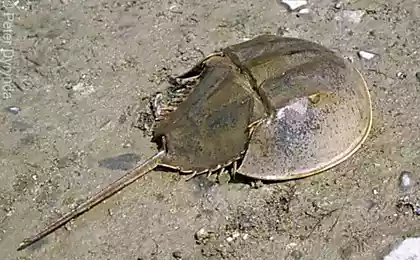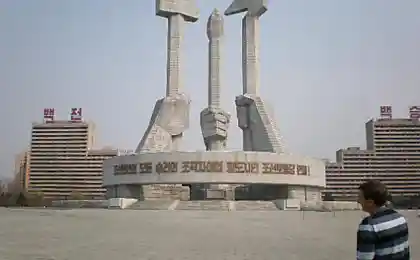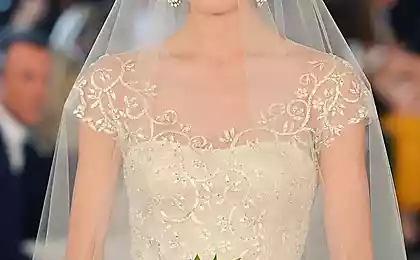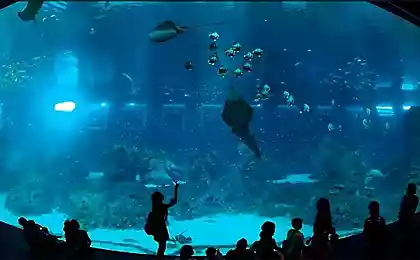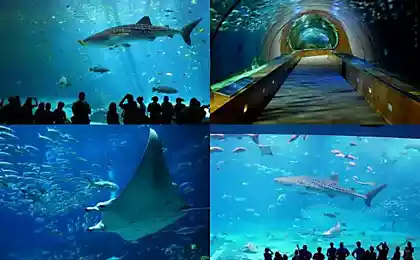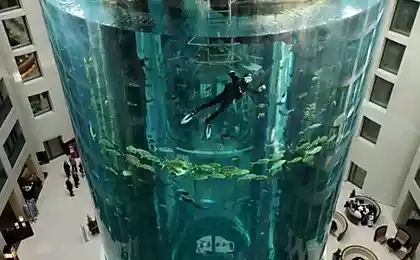423
The horseshoe crabs from North Carolina aquarium
The North Carolina aquarium (North Carolina Aquarium) presented the public with new small horseshoe crabs, or crab-horseshoe (disambiguation). Horseshoe Crabs) which were collected by employees in the immediate tidal area. Now the aquarium is six babies.
Photo: North Carolina Aquarium at Pine Knoll Shores
It is worth noting that the crab-the horseshoe has nothing to do with crabs, although both of them belong to the type of arthropods (lat.Arthropoda). The name "horseshoe crab" he's got the long tenon located at the rear of the torso.
The horseshoe crabs that live on our planet for more than 440 million years old, are considered "living fossils". To date, survived only 4 species of horseshoe crabs, the others are already extinct. Their existence can only be judged by fossil remains, the oldest known from the Ordovician sediments.
Horseshoe crabs live in the warm tropical waters off the East coast of North America and South-East Asia. The greater part of his life these unusual creatures are carried out on the shallow muddy bottom at a depth of 10-40 meters from the surface. There they feed on the remains of various marine animals, the bivalve molluscs, nemerteans and polychaetes.
During the breeding horseshoe crabs in large quantities appear in the intertidal zone, where they become the main object of industrial mass gathering. Their offspring stay in the tidal zones about a year, then young goes on a journey into the deeper water of the ocean. Puberty horseshoe crabs reach to 9-12 years of age, and they live 19-20 years. The size of the adult reaches 60 cm in length, while the length of their ancestors, who lived in the Palaeozoic period (500 million years ago) was only 1-3 cm.
During the multiplication of spawn. During spawning, the horseshoe crabs crawling on the sandy shore, drained by the low tide. The smaller male sits on opisthosomal the shield of the female and waiting for her to dig in the ground a hole, in which lay from 2,000 to 30,000 eggs. After the male fertilizes the clutch, a pair of permanently leaving this place.
Source: zoopicture.ru
Photo: North Carolina Aquarium at Pine Knoll Shores
It is worth noting that the crab-the horseshoe has nothing to do with crabs, although both of them belong to the type of arthropods (lat.Arthropoda). The name "horseshoe crab" he's got the long tenon located at the rear of the torso.
The horseshoe crabs that live on our planet for more than 440 million years old, are considered "living fossils". To date, survived only 4 species of horseshoe crabs, the others are already extinct. Their existence can only be judged by fossil remains, the oldest known from the Ordovician sediments.
Horseshoe crabs live in the warm tropical waters off the East coast of North America and South-East Asia. The greater part of his life these unusual creatures are carried out on the shallow muddy bottom at a depth of 10-40 meters from the surface. There they feed on the remains of various marine animals, the bivalve molluscs, nemerteans and polychaetes.
During the breeding horseshoe crabs in large quantities appear in the intertidal zone, where they become the main object of industrial mass gathering. Their offspring stay in the tidal zones about a year, then young goes on a journey into the deeper water of the ocean. Puberty horseshoe crabs reach to 9-12 years of age, and they live 19-20 years. The size of the adult reaches 60 cm in length, while the length of their ancestors, who lived in the Palaeozoic period (500 million years ago) was only 1-3 cm.
During the multiplication of spawn. During spawning, the horseshoe crabs crawling on the sandy shore, drained by the low tide. The smaller male sits on opisthosomal the shield of the female and waiting for her to dig in the ground a hole, in which lay from 2,000 to 30,000 eggs. After the male fertilizes the clutch, a pair of permanently leaving this place.
Source: zoopicture.ru

